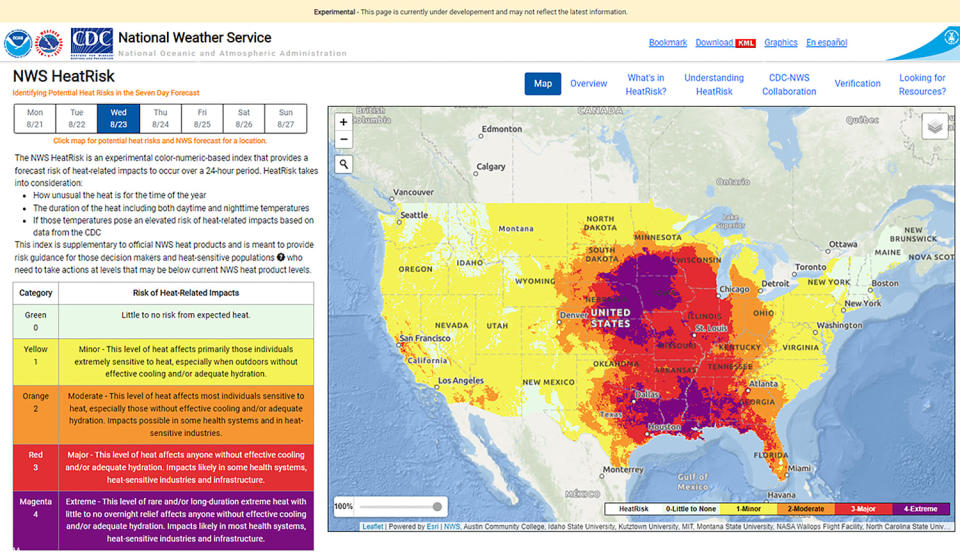New tools from NOAA and CDC show people their risk from heat as another hot summer looms
Federal officials on Monday unveiled a set of tools aimed at helping protect people in the United States from the dangers of extreme heat.
The resources, developed jointly by the National Oceanic and Atmospheric Administration and Centers for Disease Control and Prevention, include new color-coded heat forecasts and a public dashboard showing local heat risks and air quality levels. New guidelines were also released for clinicians, instructing them on how to educate patients about coping with heat waves and the health impacts of extreme heat.
The tools are part of a broader government initiative to better prepare the country for heat waves, which are increasing in frequency, intensity and duration as a result of climate change. Officials said these efforts are geared at raising awareness among those who are particularly vulnerable to extreme heat, including seniors, pregnant women, people with asthma, young children and individuals with certain underlying health conditions.
Among the new tools is an experimental system from NOAA called “HeatRisk,” which provides a seven-day heat forecast for locations across the contiguous U.S. A numerical and color-coded scale shows users the potential dangers of heat and humidity in their area.
That resource is designed to be used in conjunction with a new dashboard from the Centers for Disease Control and Prevention, which allows people to enter their zip code to see real-time and forecasted heat risks and air quality information.

Together, the tools and guidelines can, for instance, help people identify a location to stay cool if they don’t have working air conditioning, recognize symptoms of heat-related illness or understand how their medications may interact with heat, CDC director Mandy Cohen said Monday in a news briefing.
“Heat can impact our health, but heat-related illness and death are preventable,” Cohen said.
Heat kills more people in the U.S. each year than any other extreme weather event, including floods, hurricanes and tornadoes. Last year was the planet’s warmest on record, and the summer was brutally hot for huge swaths of the U.S., particularly across the South and Southwest.
NOAA officials said they hope the new resources will help communities plan for the upcoming summer months. The agency has said it expects temperatures for much of the U.S. in May and June to be above average, ahead of what is expected to be another hot summer across the country.
“When it comes to heat, it’s never too early to prepare,” NOAA administrator Rick Spinrad said in the briefing.
On NOAA's HeatRisk tool, the scale ranges from 0 or green, meaning little or no risk from expected heat, to 4 or magenta, which indicates extreme and/or long-duration heat-related impacts.
The risk levels account for the projected high and low temperatures, and factor in the cumulative impacts of heat over daytime and nighttime conditions, according to NOAA. The outlooks are designed to be personalized by location, since a 100-degree Fahrenheit day in Miami will feel different from a 100-degree day in Phoenix, for example.
The forecasts also include historical context to help people understand how unusual the projected temperatures will be for any given time of year.
Ken Graham, director of NOAA’s National Weather Service, said the tools could help users plan when to limit time outdoors or put off certain strenuous activities. The idea is to give people more context to supplement the heat watches and warnings that the agency issues, he added.
NOAA said the National Weather Service initially developed a prototype of the HeatRisk tool for California in 2013. In 2017, the project was expanded to include all Western states, and it is now available experimentally across the contiguous U.S.
Members of the public can submit feedback on the tool to the National Weather Service through Sept. 30.
This article was originally published on NBCNews.com

